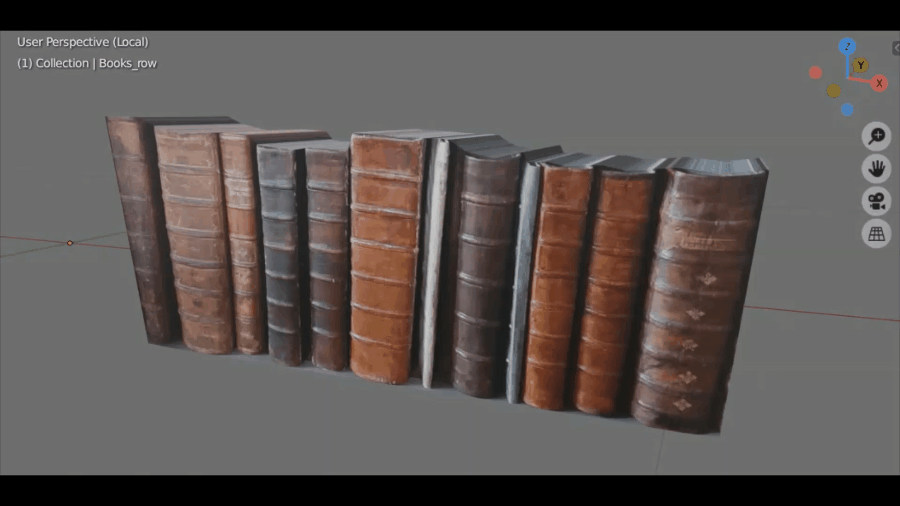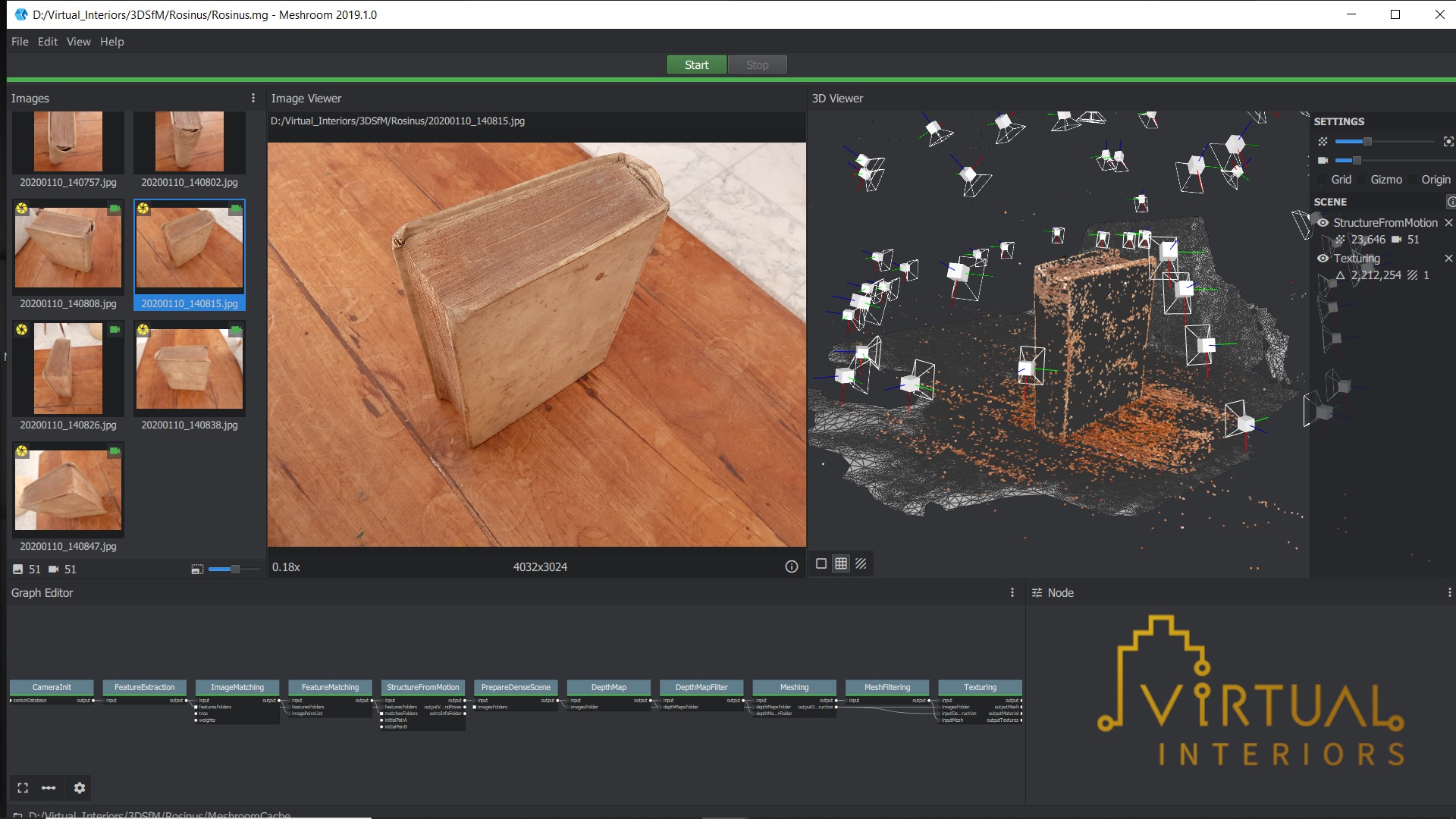
Excerpt from C. Piccoli, 'Private libraries as a microcosmos of knowledge: Travelling through time and space with Pieter de Graeff’s book collection', blogpost Virtual Interiors project website, 2 July 2020
One of the modelling challenges posed by this room was the need to create all the books that filled up the shelves: modelling them one by one in detail would be not only too time consuming, but would also lead to an excessively high polygon count, which can be problematic when using the model for online real time interaction. I therefore modelled the rows of books as two-sided simple geometries and relied solely on the pictures of their spines, taken at the Thysiana library in Leiden, to give the impression of their details and volumetric properties. The image below illustrates the result of this technique:

For the books I put on top of the closet, near the window, a more detailed geometrical representation was needed. For this reason, I used another technique called ‘Structure from Motion’ (SfM), which allows the estimation and reconstruction of the 3D geometry of an object from a series of pictures. To this end, I took several overlapping pictures of books from different perspectives, and used them as input in the open source photogrammetry software Meshroom, which, with some tweaking of the default parameters, allowed the creation of highly detailed 3D models (see images below).

The models are then optimized in Blender and Meshlab. An example of the results is available for exploration and download on Sketchfab:
17th century book by Chiara Piccoli on Sketchfab